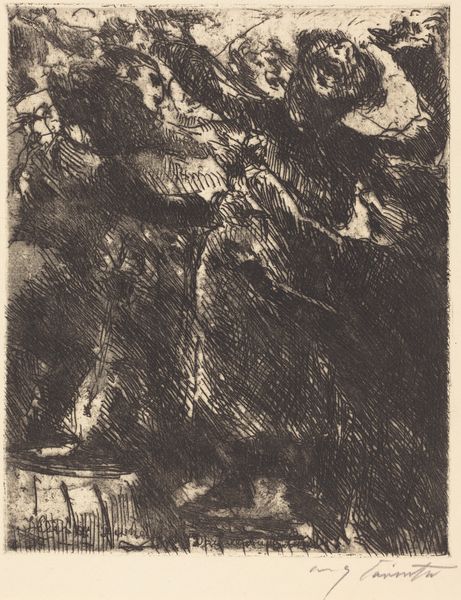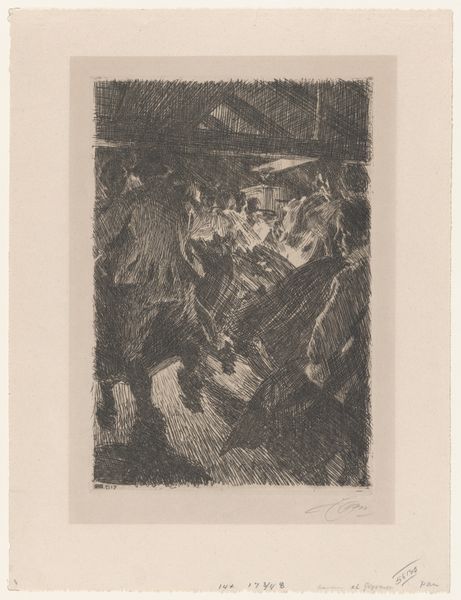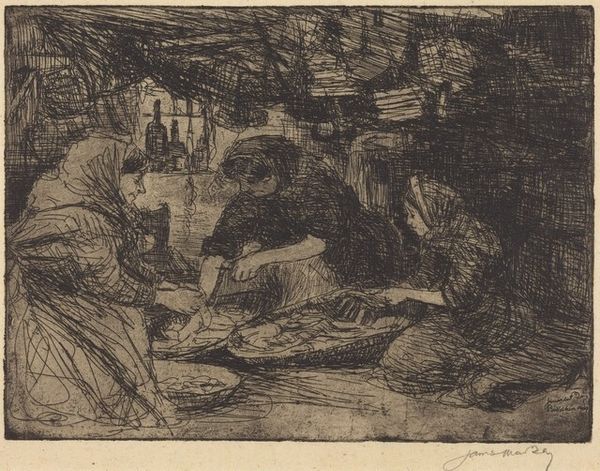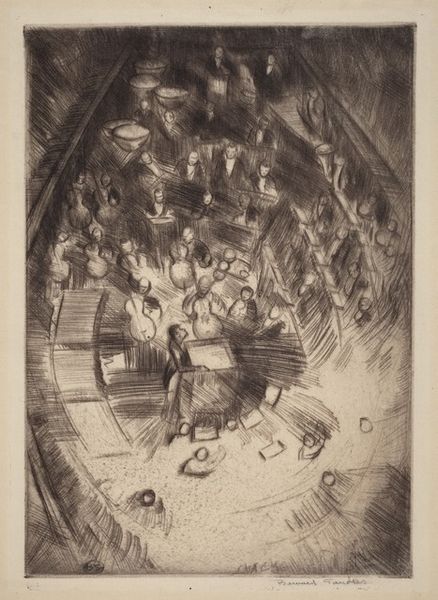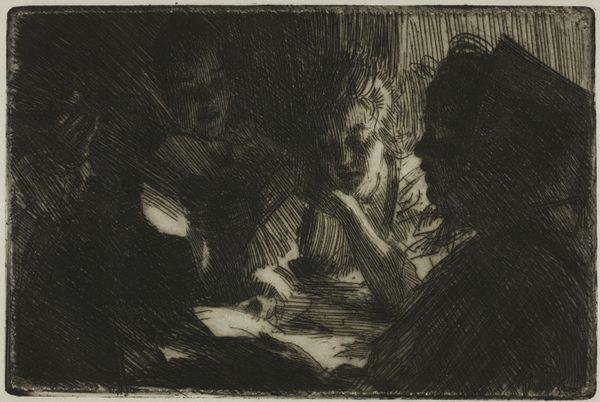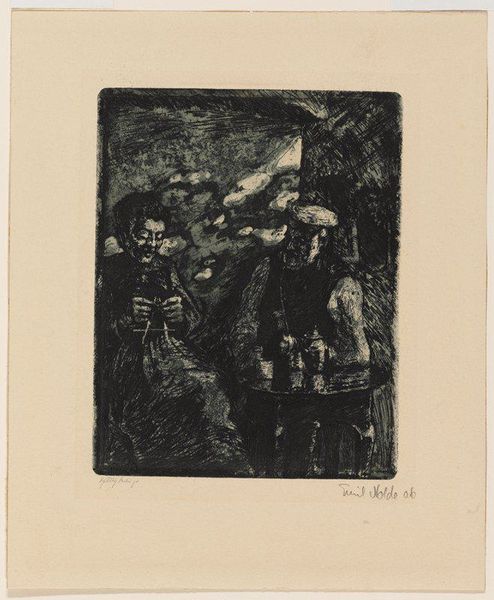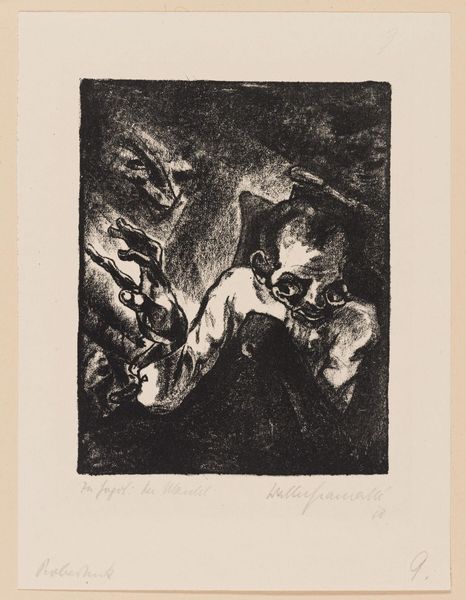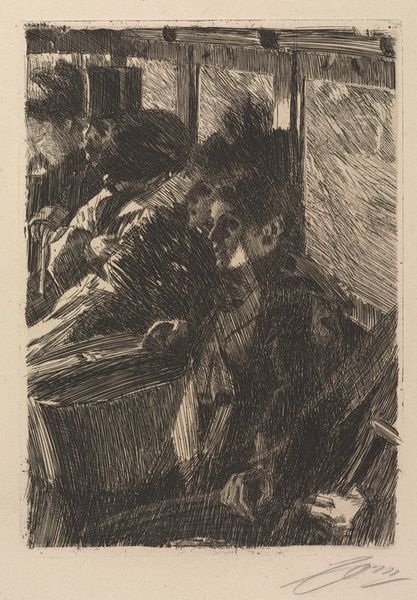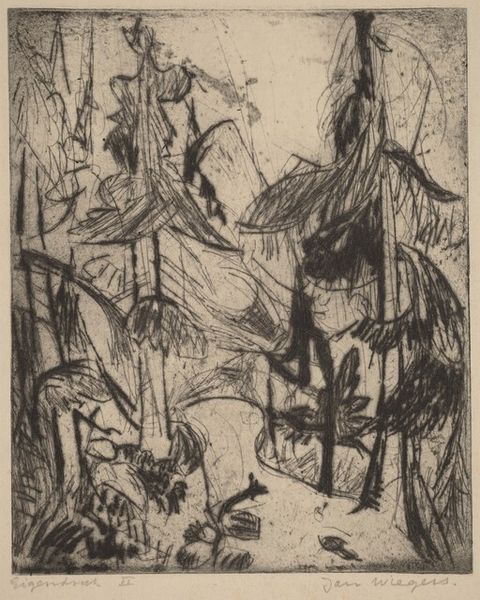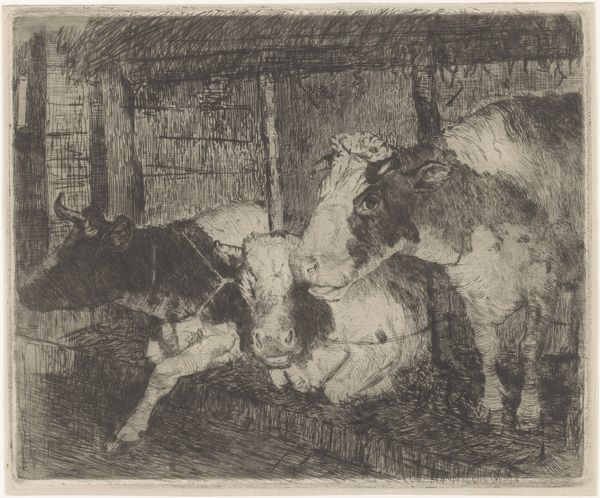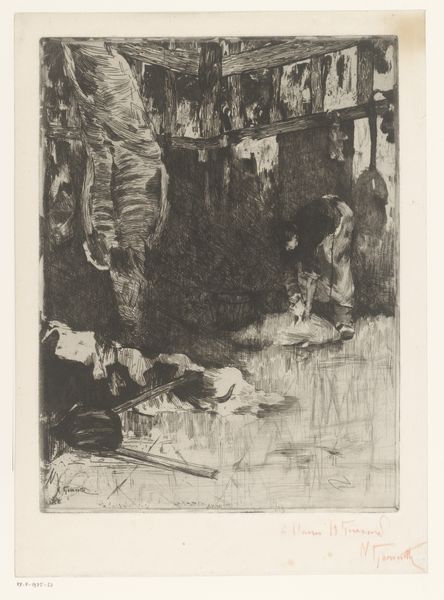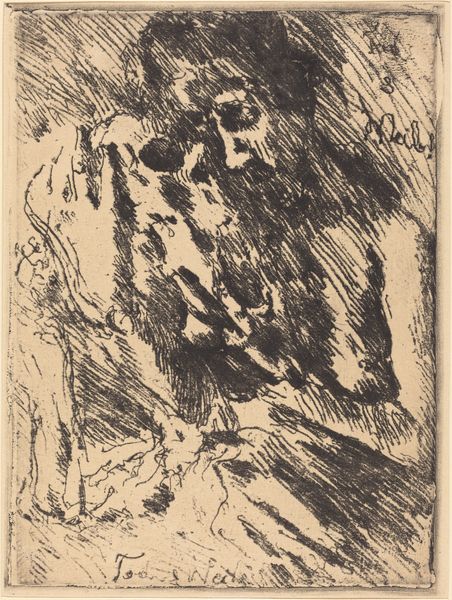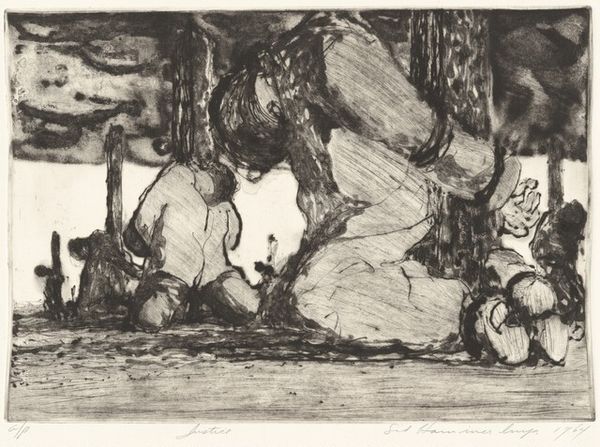
Copyright: Public Domain: Artvee
Editor: This is Anders Zorn’s “Gopsmor Cottage,” created in 1917. It’s an etching and print, and at first glance, it feels almost overwhelmingly dark. What details jump out at you, in terms of its construction? Curator: I am immediately drawn to the intricate network of lines that construct the scene. Note how Zorn uses hatching and cross-hatching, varying the density and direction to suggest depth and form. It is less about reflecting exterior reality than the careful manipulation of line to create visual space. Do you see the rhythm and contrast generated between the light and shadow? Editor: Yes, I can see how the varying lines almost create textures. It's almost a symphony of scratches! What’s the effect of reducing the composition to seemingly hurried and chaotic lines? Curator: Indeed, the expressiveness of line allows him to define mass, even shadow itself. The human figures are thus secondary; their features rendered almost incidental to the tonal range achieved through these formal means. A clear dialogue exists between the real, physical depth of the etching plate and its representation of depth within the image. Editor: I see how you're connecting the technique and subject together. Thank you. I will definitely be taking a closer look at the hatching and cross-hatching now. Curator: By all means. This exercise in visual grammar underscores how seemingly simple lines carry profound implications within a carefully structured artwork.
Comments
No comments
Be the first to comment and join the conversation on the ultimate creative platform.
